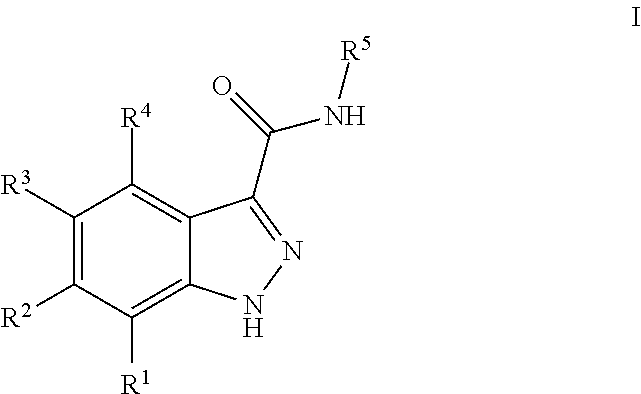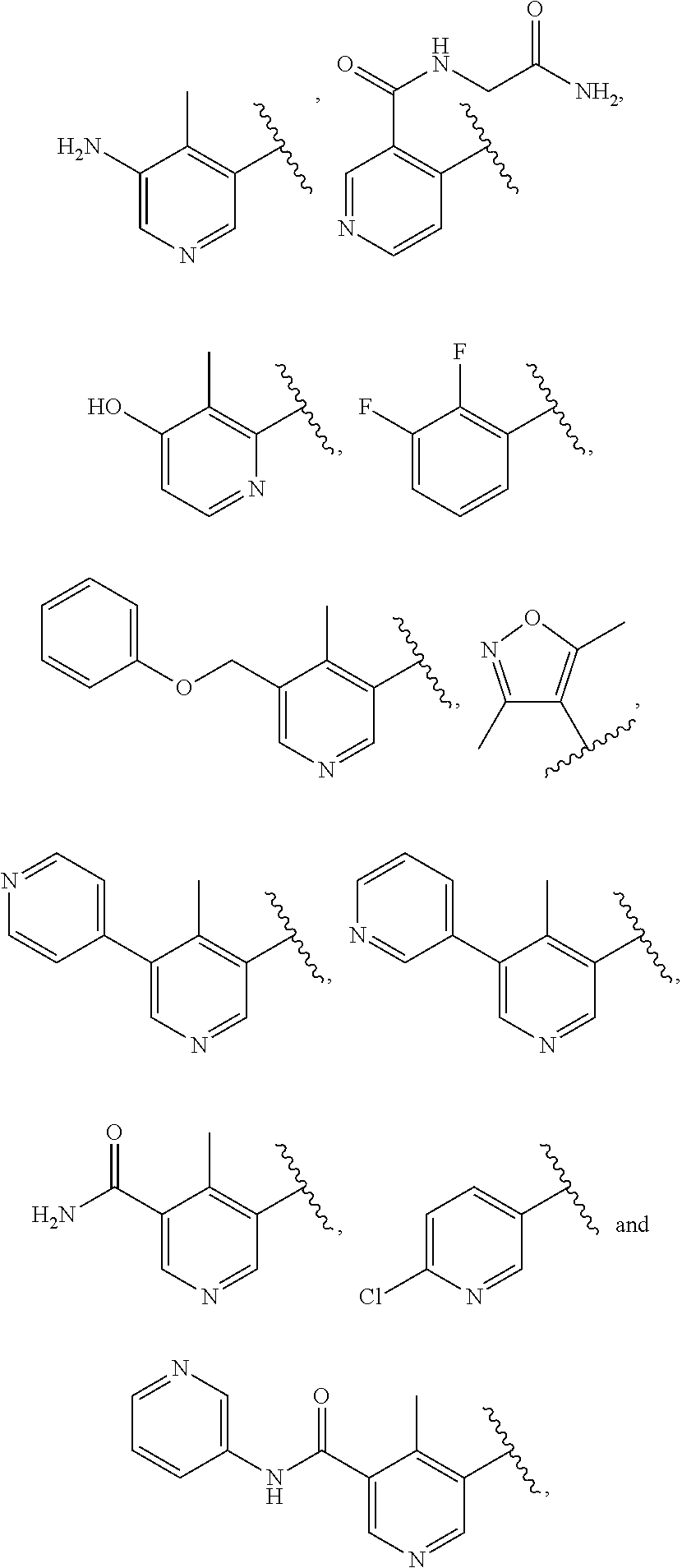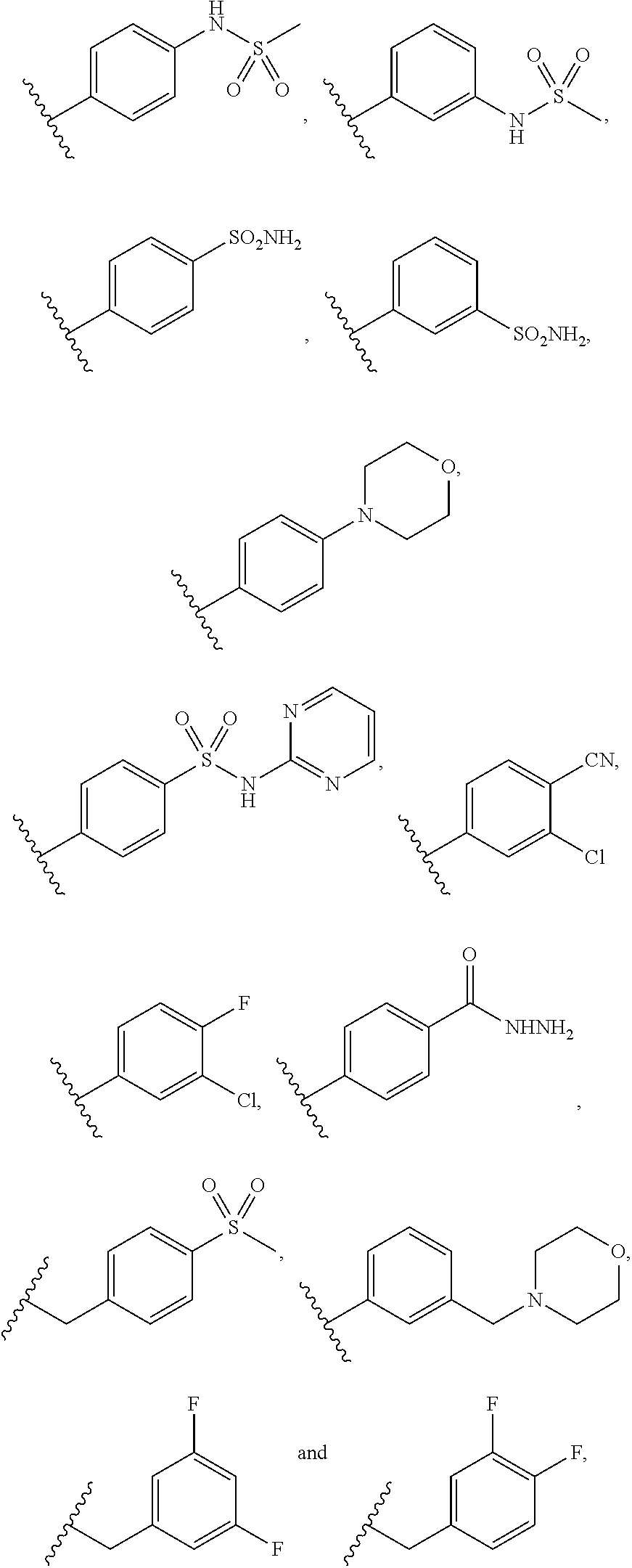INDAZOLE-3-CARBOXAMIDES AND THEIR USE AS WNT/Beta-CATENIN SIGNALING PATHWAY INHIBITORS
a technology of indazole and carboxamide, which is applied in the field of indazole3carboxamide compound, can solve problems such as development defects
- Summary
- Abstract
- Description
- Claims
- Application Information
AI Technical Summary
Benefits of technology
Problems solved by technology
Method used
Image
Examples
example 1
[0420]Preparation of 5-(5-(3,3-dimethylureido)pyridin-3-yl)-N-(pyridin-3-yl)-1H-indazole-3-carboxamide (1) is depicted below in Scheme 27.
Step 1-2
[0421]A solution of 5-iodo-1-(tetrahydro-2H-pyran-2-yl)-1H-indazole-3-carbaldehyde (CXIV) (1.780 g, 5.0 mmol), bis(pinacolato)diboron (1.523 g, 6.0 mmol), KOAc (1.471 g, 15 mmol) and dry DMF (20 mL) was purged with argon. PdCl2(dppf)2 (0.245 g, 0.3 mmol) was added to the reaction and purged again with argon. The solution was heated at 90° C. for 2 h. Once TLC showed the disappearance of (CXIV), the solution was cooled to room temperature. To this solution was added K3PO4 (1.592 g, 7.5 mmol), 3-(5-bromopyridin-3-yl)-1,1-dimethylurea (XXII) (1.220 g, 5.0 mmol), Pd(PPh3)4 (173 mg, 0.15 mmol) and water (2 mL). The solution was purged with argon and heated at 90° C. for 3 h. The solution was cooled to room temperature and then concentrated under reduced pressure. The residue was dissolved in DCM and washed with water, dried over MgSO4, filtered...
example 2
[0427]Preparation of 5-(5-fluoropyridin-3-yl)-N-(6-(trifluoromethyl)pyridin-3-yl)-1H-indazole-3-carboxamide (2) is depicted below in Scheme 28.
Step 1
[0428]HATU (1.125 g, 2.96 mmol) was added to a solution of 5-bromo-1-(tetrahydro-2H-pyran-2-yl)-1H-indazole-3-carboxylic acid (CXVIII) (0.876 g, 2.69 mmol) and diisopropylethylamine (1.03 mL, 5.92 mmol) in DMF stirred at room temperature under argon. After stirring 5 min, the solution was added with 5-amino-2-trifluoromethylpyridine (CXXVII) (0.479 g, 2.96 mmol). The solution was stirred 24 h at room temperature under argon. The DMF was removed under reduced pressure, and the residue was treated with water, sonicated briefly and filtered. The solids were washed with cold water and dried at room temperature. The product was purified by silica gel column chromatography (100% hexanes→7:93 EtOAc:hexanes) to afford 5-bromo-1-(tetrahydro-2H-pyran-2-yl)-N-(6-(trifluoromethyl)pyridin-3-yl)-1H-indazole-3-carboxamide (CXXVIII) as a white solid (1...
example 3
[0439]Preparation of N,5-di(pyridin-3-yl)-1H-indazole-3-carboxamide (4) is depicted below in Scheme 29.
Step 1
[0440]5-Iodo-1-(tetrahydro-2H-pyran-2-yl)-1H-indazole-3-carbaldehyde (CXIV) (1.53 g, 4.30 mmol), pyridine-3-boronic acid (CXXXI) (0.58 g, 4.73 mmol), and potassium phosphate tribasic (1.37 g, 6.45 mmol) was dissolved in 1,4-dioxane (43.0 mL) and water (9.0 mL). Tetrakis(triphenylphosphine)palladium(0) (0.50 g, 0.4301 mmol) was added, and the reaction was heated to 95° C. for 2.5 h. The solvent was removed, and the residue was partitioned between EtOAc and water. The organic phase was separated and washed sequentially with water and brine. The material was dried (MgSO4), concentrated, and purified by flash chromatography using a 40 g Thomson normal phase silica gel cartridge (100% hexanes→1:1 EtOAc:hexanes) to afford 5-(pyridin-3-yl)-1-(tetrahydro-2H-pyran-2-yl)-1H-indazole-3-carbaldehyde (CXXXII) (0.62 g, 2.02 mmol, 47% yield) as a tan amorphous solid. 1H NMR (DMSO-d6) δ ppm ...
PUM
| Property | Measurement | Unit |
|---|---|---|
| Structure | aaaaa | aaaaa |
| Cell proliferation rate | aaaaa | aaaaa |
Abstract
Description
Claims
Application Information
 Login to View More
Login to View More - R&D
- Intellectual Property
- Life Sciences
- Materials
- Tech Scout
- Unparalleled Data Quality
- Higher Quality Content
- 60% Fewer Hallucinations
Browse by: Latest US Patents, China's latest patents, Technical Efficacy Thesaurus, Application Domain, Technology Topic, Popular Technical Reports.
© 2025 PatSnap. All rights reserved.Legal|Privacy policy|Modern Slavery Act Transparency Statement|Sitemap|About US| Contact US: help@patsnap.com



